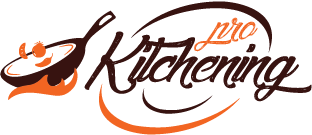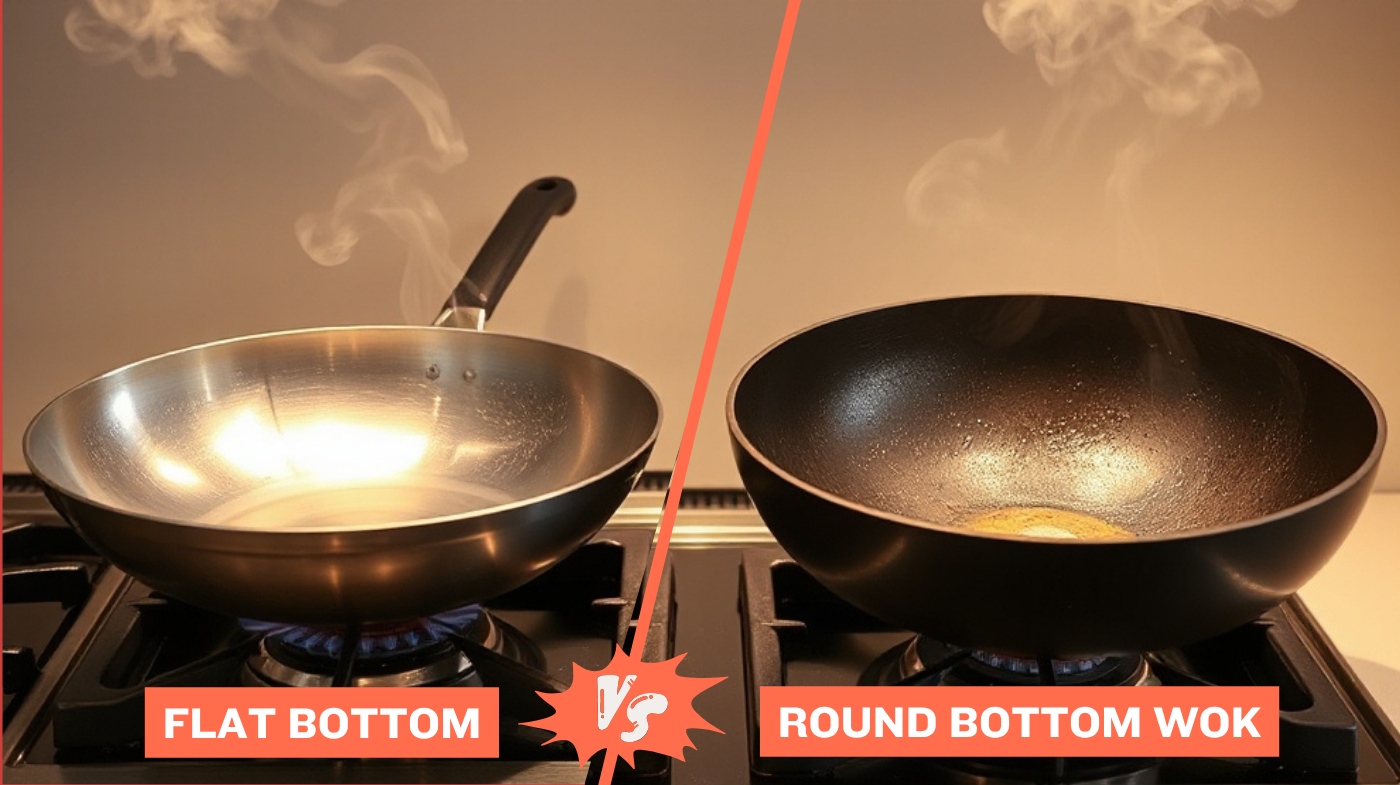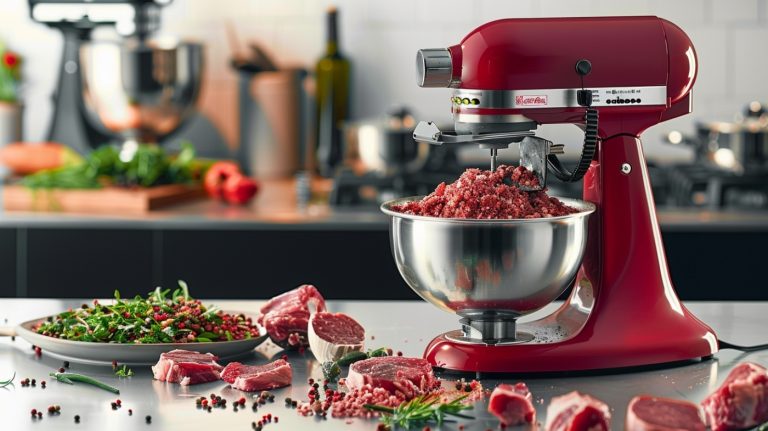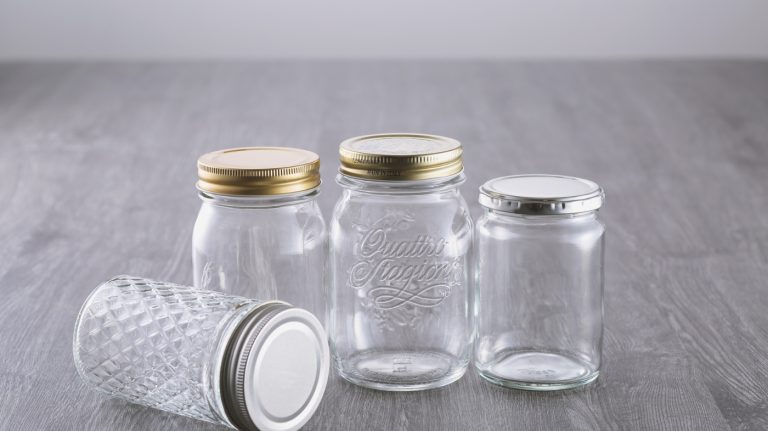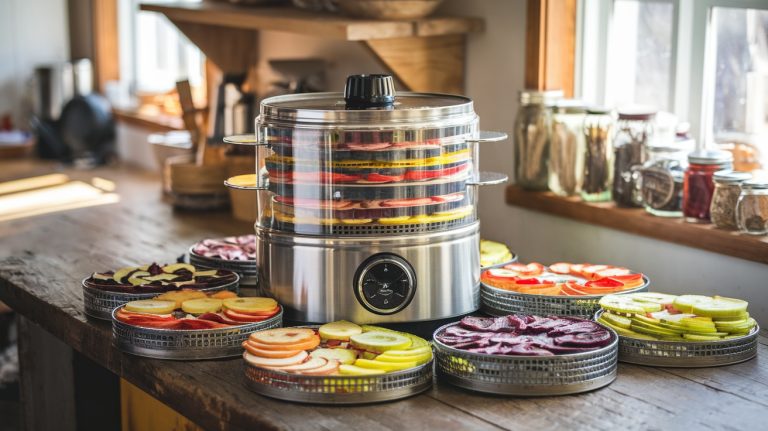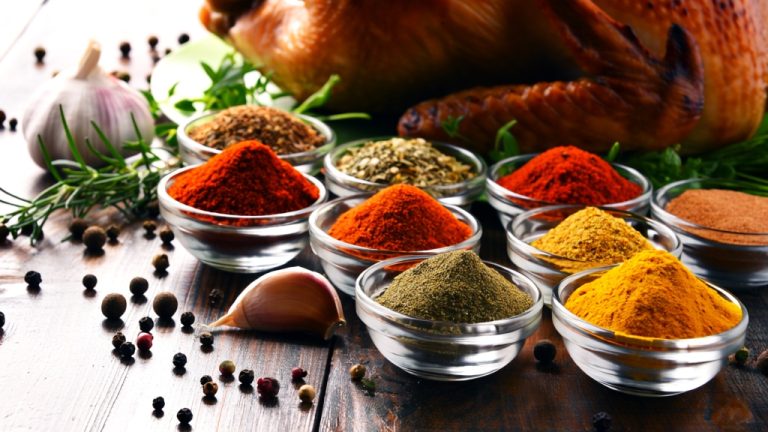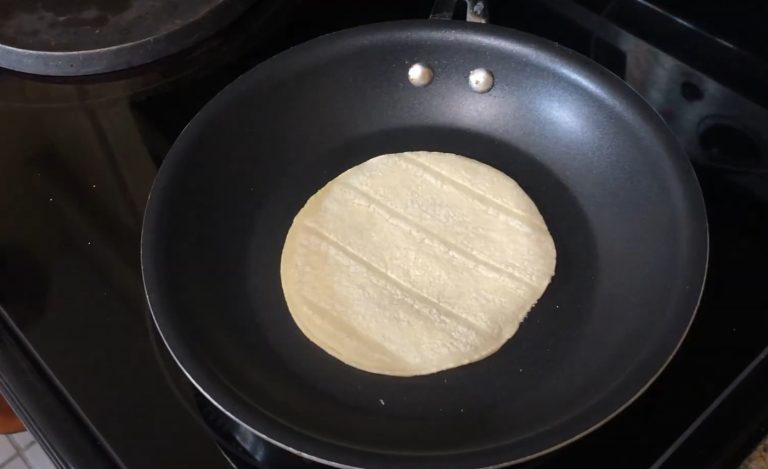Flat Bottom vs Round Bottom Wok: Know the Differences
If you cook on gas, a round bottom wok delivers intense, focused heat and authentic stir-fry flavor but needs a wok ring for stability.
For electric, induction, or glass stoves, a flat bottom wok gives you even heat, better balance, and larger cooking space without extra accessories. Both require carbon steel for durability and care.
Understanding these trade-offs helps you pick the wok that fits your stove and style—keep exploring to find the best match for your kitchen.
- Babish 14 Inch Carbon Steel Wok (6″ Flat Bottom)
- Heavy-gauge, carbon steel for rapid and even heat distribution perfect for frying and stir-frying
- Riveted wooden handles provide strength and stay cool to the touch
- TRADITIONAL HAND HAMMERED WOK: 15 gauge Carbon steel wok made of premium carbon steel, heavy and…
- WOK SET & RICH COOKWARES: You can get round bottom wok pan, wooden handle and steel helper handle, 1…
- PERFECT SIZE & MULTIFUNCTIONAL (COMMERCIAL GRADE): Our 13.4″ carbon steel wok have large enough…
Key Takeaways
- Flat bottom woks offer stability and compatibility on all stove types, including induction, without needing wok rings.
- Round bottom woks provide intense, focused heat ideal for authentic high-heat stir-frying and achieving traditional “wok hei” flavor.
- Flat bottom woks have a larger cooking surface, making them better for batch cooking and even heat distribution.
- Round bottom woks require specialized gas burners and wok rings, which can be inconvenient and less safe in modern kitchens.
- Flat bottom woks suit home kitchens prioritizing ease, safety, and versatility, while round bottom woks preserve traditional cooking techniques.
Choosing Your Wok: Key Differences in One Table
| Aspect | Flat Bottom Wok | Round Bottom Wok |
|---|---|---|
| Stove Compatibility | Works on all stoves (gas, electric, induction, glass) | Best on gas stoves, needs a wok ring for others |
| Heat Distribution | Even heat across the base, ideal for large batches | Intense central heat, great for high-heat stir-frying |
| Stability & Safety | Stable and secure without extra accessories | Requires a wok ring, higher tipping risk |
| Cooking Style | Better for versatile cooking and steady heating | Enables traditional wok hei and tossing techniques |
| Portion Size Suitability | Larger usable surface, great for family meals | Smaller surface, suited for quick, smaller portions |
| Authenticity | Modern adaptation, less traditional | Authentic Chinese design and heritage |
| Maintenance | Can warp under high heat, needs seasoning | More resistant to warping, still requires seasoning |
Versatility and Stove Compatibility
While round bottom woks excel on traditional gas stoves with open flames, their compatibility is limited if you cook on electric, glass, ceramic, or induction cooktops without additional accessories like wok rings.
You’ll need a properly sized wok ring to stabilize the round wok on flat surfaces, which adds cost and can be inconvenient. Round woks naturally balance over gas burners, but you must handle them carefully to avoid wobbling.
A wok ring is essential to steady round woks on flat surfaces, adding cost and requiring careful handling to prevent wobbling.
In contrast, flat bottom woks work seamlessly on all cooktop types—gas, electric, ceramic, and induction—without extra support.
Their stable design fits snugly on any flat surface, making them highly versatile. The flat bottom allows for stability on any cooktop, including induction stoves, which is why they are more popular outside of China.
If your kitchen has mixed or non-gas stoves, a flat bottom wok is the practical choice for consistent performance across appliances.
Heat Distribution and Cooking Efficiency
Because heat distribution directly affects cooking efficiency, choosing between a flat bottom and round bottom wok impacts how your food cooks.
A flat bottom wok offers full, direct contact with the stove, delivering even heat across its base for consistent cooking, especially with larger portions.
This steady heat reduces extreme hot spots, ideal for recipes requiring uniform temperatures. It is also compatible with electric stoves, making it a practical choice for many Western kitchens.
Conversely, a round bottom wok heats intensely at its curved base, creating a “hot spot” for quick searing while cooler sides allow temperature control by shifting ingredients. This gradient lets you stir-fry with dynamic heat zones, enhancing texture and flavor.
However, flat bottom woks may not reach the peak searing temperatures of round ones but compensate with sustained, uniform heating, making them efficient for steady cooking and larger batches.
Stability and Safety Considerations
You want a wok that stays secure no matter your stove type, and flat-bottom woks deliver that stability on gas, electric, and induction surfaces without wobbling.
Flat-bottom woks also provide good heat distribution for quick cooking. Round-bottom woks, however, need a wok ring to prevent tipping, which can increase spill risks during quick stir-frying.
Stove Compatibility Stability
When cooking on various stovetops, choosing between a flat bottom and a round bottom wok greatly affects stability and safety. Flat bottom woks sit securely on all stove types—gas, electric, induction, ceramic, or glass—providing firm contact that prevents wobbling.
Round bottom woks, designed for gas flames, need a wok ring or stand on flat surfaces, which adds complexity and potential hazards. Additionally, a flat bottom wok is versatile enough to accommodate different cooking styles and methods, enhancing overall usability in the kitchen.
| Wok Type | Stove Compatibility |
|---|---|
| Flat Bottom | Works on all stovetops safely |
| Round Bottom | Best on gas; needs support on flat stoves |
| Stability | Flat bottom offers superior stability |
Choosing a flat bottom wok minimizes tipping risk and enhances your control during vigorous cooking, making it the safer, more practical choice on most stovetops.
Tipping and Spillage Risks
Although both flat and round bottom woks serve similar cooking purposes, their design differences greatly impact tipping and spillage risks.
Flat bottom woks sit securely on your stove, minimizing wobble and reducing tipping hazards, especially on electric or glass cooktops.
In contrast, round bottom woks need a wok ring for stability; without it, you risk spills and burns due to their curved base. This need for a wok ring can sometimes make round bottom woks less convenient for everyday use.
The round bottom’s shape also makes food slide more easily, increasing spillage during stirring or tossing. Flat bottoms maintain a level cooking surface, containing ingredients better and lowering hot oil splashing risks.
However, you must handle round bottom woks with extra care when moving or cleaning to avoid accidental tipping. Overall, flat bottom woks offer safer, steadier control, particularly in modern kitchen environments.
Capacity and Usable Cooking Surface
When choosing between flat and round bottom woks, you’ll notice the flat bottom offers a larger usable cooking surface, especially at the base.
This extra space lets you cook bigger portions more evenly, making it ideal for batch meals or family-sized servings.
In contrast, round bottom woks concentrate heat at the center but limit how much food you can spread out, affecting portion size suitability.
Additionally, flat bottom woks provide stability and excellent heat distribution, which is essential for use on electric or induction stovetops.
Surface Area Comparison
Because the shape of a wok directly influences its cooking surface, understanding the differences in capacity and usable area between flat bottom and round bottom woks is essential for selecting the right tool.
Flat bottom woks provide a larger, more stable cooking surface due to their direct contact with the stove, promoting even heat distribution and efficient cooking. Their flat base allows for compatibility across all stove types, though they may warp with prolonged heat.
Among flat bottom woks, there are variations in the size of the bottom surface area, which can affect how much oil is needed and how food cooks on them surface area variations.
In contrast, round bottom woks have a curved shape that limits direct contact with the stove, often reducing usable surface area unless supported by a wok ring or pedestal. However, their design requires less oil and is ideal for traditional high-heat techniques.
Portion Size Suitability
Choosing the right wok for your cooking needs depends heavily on portion size suitability, which involves both capacity and usable cooking surface.
Flat bottom woks offer a larger cooking surface, enabling you to prepare bigger portions—like 3-4 bowls in a 14-inch model or up to 7 bowls in a 16-inch.
Their stable, full contact with flat stovetops maximizes heat distribution and handling of bulk meals, making them ideal for family or group cooking. Additionally, flat bottom woks vary in size, with some models offering larger cooking surfaces to accommodate different volume needs.
In contrast, round bottom woks have smaller contact areas and often require wok rings, which reduce usable surface and limit portion size. They excel at high-intensity cooking for smaller portions but aren’t suited for large batches.
If you need versatility and efficient heat use on modern stoves, flat bottom woks clearly provide superior portion size suitability.
Authenticity and Traditional Use
Although flat bottom woks suit modern kitchen setups, they don’t carry the cultural weight or authenticity of round bottom woks, which have been central to Chinese cooking for over two millennia.
Round bottom woks originated in China around 2,000 years ago and remain the authentic vessel for traditional stir-fry, delivering the prized “wok hei” flavor through intense, focused heat. Their excellent heat distribution due to sloping sides makes them ideal for the tossing and flipping motion essential in stir-frying.
Flat bottom woks, by contrast, are a practical adaptation for Western stoves and lack historical or cultural roots in Chinese cuisine.
Consider these key points:
- Round bottom woks symbolize traditional Chinese culinary heritage and authentic cooking techniques.
- Flat bottom woks prioritize compatibility over cultural authenticity.
- Many Asian chefs and households still prefer round bottom woks for their symbolic and functional significance.
Maintenance and Longevity
When maintaining your wok, understanding the differences in heat exposure and stability between flat and round bottoms is essential to ensuring their longevity.
Flat-bottom woks face direct heat contact, risking warping if thin, while round-bottom woks avoid this but require a wok ring, which can cause additional wear from movement.
Both need regular seasoning and prompt drying to prevent rust. Additionally, carbon steel is a common material choice that requires consistent upkeep to maintain its cooking performance.
| Aspect | Flat Bottom Wok |
|---|---|
| Heat Exposure | Sustained contact; risk of warping |
| Stability | Stable on all stovetops |
| Storage | Easy to stack and store |
| Maintenance | Regular seasoning; less movement wear |
Proper care extends both types’ lifespan, but flat-bottom woks generally tolerate varied kitchens better.
Material Quality and Heat Retention
Since material quality directly influences heat retention and cooking performance, understanding the compositions of flat and round bottom woks is crucial.
Both commonly use carbon steel, prized for quick heating and durability, though cast iron offers superior retention at the cost of weight and slower heating.
Flat bottom woks guarantee even heat distribution by maintaining full contact with stovetops, while round bottom woks concentrate heat at their curve, ideal for high-heat stir-frying but rely on a wok ring on flat stoves.
- Carbon steel balances rapid heating with excellent heat retention and responsiveness.
- Flat bottoms suit electric and induction stoves, maximizing heat transfer and stability.
- Round bottoms resist warping better due to focused heat and less direct contact.
Material thickness also affects heat retention and durability, influencing your wok’s cooking efficiency.
Additionally, carbon steel woks develop a natural non-stick patina over time, enhancing cooking performance with proper seasoning and care natural non-stick patina.
Cooking Techniques and Performance
Two key factors define how your wok performs in cooking: heat distribution and intensity.
A round-bottom wok concentrates intense heat at its center, perfect for high-heat stir-frying and achieving “wok hei.” Its sloping sides create temperature zones, allowing precise control as food moves between hotter and cooler areas. This design supports the classic tossing motion, enhancing flavor and texture through dynamic heat exposure.
Conversely, a flat-bottom wok distributes heat evenly across its base but lacks the intense focal point, making it better suited for simmering, sautéing, and cooking larger batches uniformly. Its flat surface restricts tossing, resembling skillet techniques.
Both wok types offer versatility, but the round-bottom excels in rapid, high-heat cooking, while the flat-bottom provides consistent moderate heat, impacting your technique and dish outcomes considerably.
Practicality for Home Kitchens
How well your wok fits into your home kitchen setup greatly influences your cooking experience.
Flat-bottom woks excel in practicality because they’re compatible with all stove types—gas, electric, induction, and glass-top—while round-bottom woks need specialized gas burners.
You won’t need additional accessories like wok rings with a flat-bottom, which means easier setup and enhanced stability.
Flat-bottom woks also offer better heat transfer and more surface area, ideal for larger portions and versatile cooking styles.
- Stable on any stove without extra accessories
- Efficient heat distribution on modern ranges
- Suitable for various cooking tasks and family-sized meals
Choosing the Right Wok for Your Needs
What factors should you consider when choosing the right wok for your kitchen? You need to evaluate compatibility with your cooktop, cooking style, and desired authenticity.
Flat-bottom woks suit electric or induction stoves and provide stability, while round-bottom woks excel with gas burners and traditional stir-frying techniques. Capacity and heat distribution also matter, affecting cooking performance and volume.
Round bottom woks are also favored for their ability to evenly toss food and facilitate various cooking methods like braising and deep-frying due to their greater versatility.
| Factor | Flat-Bottom Wok | Round-Bottom Wok |
|---|---|---|
| Cooktop Compatibility | Works on all cooktops | Best on gas with wok ring |
| Cooking Style | Larger batches, even heat | High heat, tossing, authentic flavor |
| Maintenance | Prone to warping, needs seasoning | Durable, traditional care needed |
Frequently Asked Questions
Can I Use a Wok Lid With Both Flat and Round Bottom Woks?
You can definitely use a wok lid on both flat and round bottom woks, as long as the diameter matches.
Most lids come in standard sizes and feature a dome shape that traps steam and heat efficiently, enhancing cooking regardless of wok shape.
Materials like aluminum or stainless steel guarantee durability and ease of cleaning. Just check the size, and you’ll enjoy moisture retention, flavor concentration, and splatter reduction with either wok type.
Do Flat or Round Bottom Woks Affect the Flavor of the Food?
Yes, the wok’s shape can influence your food’s flavor. Round bottoms create hotter, concentrated heat zones, enhancing smoky wok hei and caramelization, which deepens flavor complexity.
Flat bottoms distribute heat evenly, giving you consistent cooking but milder searing. Oil usage differs too—round woks need less oil, producing lighter dishes, while flat woks may yield richer textures.
Are There Specific Utensils Recommended for Flat Versus Round Bottom Woks?
Funny how the right utensil changes everything, right? For flat bottom woks, you’ll want spatulas with flat, wide edges to scrape that surface cleanly—silicone’s great for non-stick coatings.
Round bottom woks call for long-handled, slightly curved spatulas that hug the dome, often wooden or bamboo to protect seasoning. Both need heat-resistant handles.
Choosing your tools based on wok shape guarantees efficient cooking and preserves your wok’s longevity.
How Do Flat and Round Bottom Woks Compare in Terms of Storage Space?
You’ll find that flat bottom woks rest securely on flat shelves, making them easy to stack with other cookware and safer in tight spaces. Their wider base means they need more horizontal storage room but less specialized racks.
Round bottom woks save vertical space by nesting inside larger pots or hanging easily, though they require wok rings and dedicated stands, which take extra room. Your choice depends on your kitchen’s layout and storage options.
Can I Use a Wok on an Outdoor Grill or Campfire?
You can absolutely release your wok’s full potential on an outdoor grill or campfire. Carbon steel and cast iron woks handle intense flames without warping, while stainless steel resists rust.
Use long-handled woks for safety and guarantee stable surfaces to avoid tipping. Coat your wok with oil before heating to prevent sticking, and arrange coals evenly for consistent heat. With proper tools and caution, outdoor wok cooking turns any fire into a gourmet adventure.
Elevate Your Cooking with the Wok That Fits You Best
Choosing between a flat bottom and round bottom wok is like selecting the perfect vessel for your culinary journey. The flat bottom symbolizes modern adaptability, fitting snugly on your stovetop and offering steady control.
The round bottom, meanwhile, embodies tradition and fluid heat, inviting you to master classic techniques. Understanding their strengths lets you wield your wok with purpose, turning every meal into a crafted masterpiece that balances practicality with authentic flavor.
- PRE-SEASONED & NONSTICK: Carbon steel is the best wok material because it has a natural nonstick…
- GENUINE TASTE: Our large wok pan reacts quickly to heat adjustments and is specially designed to…
- VERSATILITY: Flat-bottomed wok is better suited for home use because it does not require a wok ring…
- GENUINE TASTE: Bring rich, traditional Asian flavors to your kitchen or campsite. The YOSUKATA…
- PRE-SEASONED: Unlike unseasoned stir fry pans, this round bottom extra large wok is pre-seasoned at…
- DURABLE CONSTRUCTION: Made from heavy-duty black carbon steel, this deep wok pan is built for high…
Last update on 2025-12-09 / Affiliate links / Images from Amazon Product Advertising API
